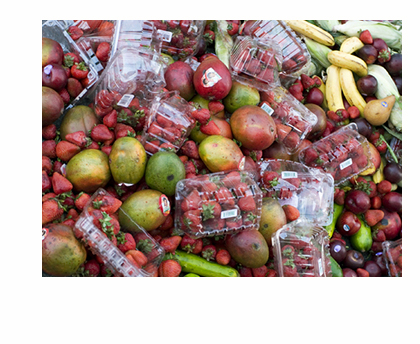The amount of food that ends up wasted is more than enough to feed every American who goes to bed hungry, or wakes up not knowing for sure where their next meal will come from.
That makes the country’s massive and unfortunate hunger problem also largely unnecessary, and requires that habits be changed and incentives introduced to help keep food waste out of landfills, and put it on the plates of those who need it.
COSTLY WASTE
According to the Natural Resource Defense Council, about 40 percent of the food produced in the United States is wasted. The U.S. Department of the Agriculture puts the number at around 31 percent.
In either case, an extraordinary amount of food is going to waste — canned goods thrown away at their “best-by” date, prepared food that goes untouched into the trash, excess produce that never makes it off the farm — at a cost measured in the tens of billions of dollars annually.
And that is simply the value of the food that is thrown away. Food waste is the single largest component of municipal solid waste, itself one of the greatest costs for communities throughout Maine, and one of the largest sources of methane emissions, a greenhouse gas.
The economic and environmental costs drove the USDA to announce in September a goal of reducing food waste by half by 2030.
But just a 15 percent reduction in U.S. waste would leave enough to feed more than 25 million Americans, about half of those who now do not get enough to eat.
INCENTIVES NECESSARY
U.S. Rep. Chellie Pingree, D-1st District, has proposed federal legislation that would use tax incentives to encourage farms, retailers, restaurants and schools to waste less food, diverting what can still be eaten to food banks and other organizations that help feed the poor, and turning non-edible food scraps into energy or compost to avoid the waste stream.
Programs like this already exist, but not nearly to the scale necessary.
At University of Maine-Farmington, for example, a student has founded a local chapter off the Food Recovery Network. Aramark, the school’s food service provider, packages and preserves unused food, and volunteers pick it up each week and take it to Western Maine Homeless Outreach.
Many food retailers also donate food that has exceeded its “best-by” date (which don’t truly reflect how long a product is good for, another target of Pingree’s bill).
Shaw’s supermarkets recently ended their donation program in the Brunswick area, until they were scolded into reversing course.
Perhaps better tax incentives would shore up these programs, and allow some retailers to expand them.
MORE SOLUTIONS
As part of this effort, the entire food chain must be examined to see where food is falling off into the waste stream.
Consumers, too, need education on the scope of the issue, and on how to shop smarter, and to properly use food waste.
Technology can help, as well, to connect retailers and other suppliers of bulk food to the charity organizations that feed the poor.
Hunger is a massive problem, and solutions, particularly those that transcend political lines, are not easy to come by.
But we know hundreds of millions of pounds of food go wasted each day in the United States, and we know about 17 million families will have trouble feeding themselves at some point this year.
If we’re looking for answers, let’s start there.
Send questions/comments to the editors.



Success. Please wait for the page to reload. If the page does not reload within 5 seconds, please refresh the page.
Enter your email and password to access comments.
Hi, to comment on stories you must . This profile is in addition to your subscription and website login.
Already have a commenting profile? .
Invalid username/password.
Please check your email to confirm and complete your registration.
Only subscribers are eligible to post comments. Please subscribe or login first for digital access. Here’s why.
Use the form below to reset your password. When you've submitted your account email, we will send an email with a reset code.